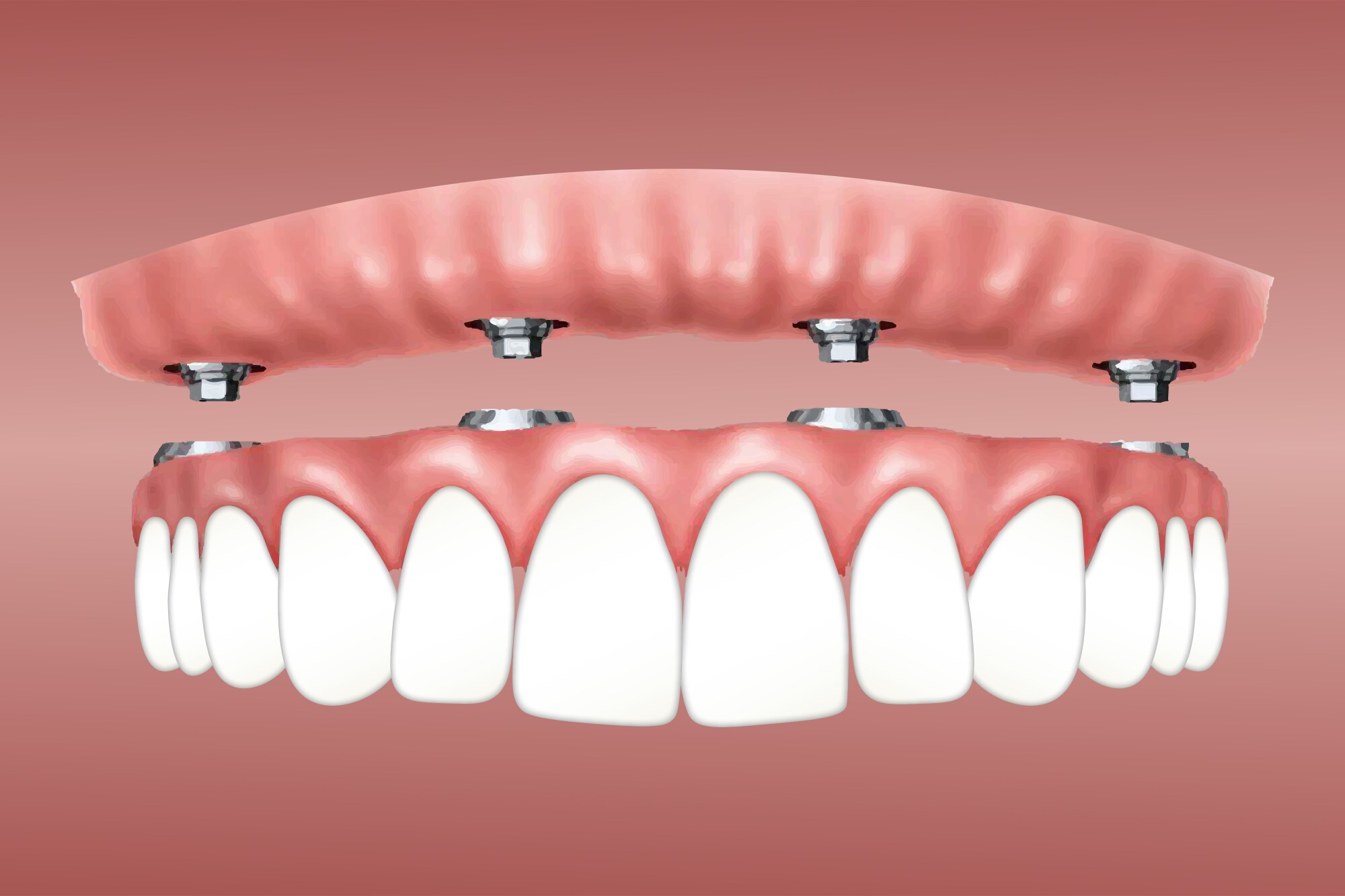Some Known Facts About Dental Sense.
Some Known Facts About Dental Sense.
Blog Article
More About Dental Sense
Table of ContentsNot known Details About Dental Sense Examine This Report about Dental SenseDental Sense Can Be Fun For AnyoneAll About Dental Sense
are medical gadgets operatively dental implanted right into the jaw to recover a person's ability to eat or their look. They supply support for man-made (phony) teeth, such as crowns, bridges, or dentures. When a tooth is shed as a result of injury or condition, a person can experience problems such as quick bone loss, defective speech, or changes to eating patterns that lead to discomfort.Oral dental implant systems contain an oral implant body and oral implant joint and may likewise include an abutment addiction screw. Dental implants. The oral implant body is operatively placed in the jawbone in place of the tooth's root. The dental implant abutment is typically attached to the dental implant body by the abutment addiction screw and extends with gum tissues into the mouth to support the attached man-made teeth
(https://www.openlearning.com/u/matthewmusic-spvoez/about/)Framework of The Oral Implant System picking oral implants, talk to your oral company regarding the prospective benefits and threats, and whether you are a prospect for the procedure. Points to take into consideration: Your overall wellness is an essential consider establishing whether you are a good prospect for oral implants, how long it will take to heal, and the length of time the implant might stay in location.
Smoking cigarettes might influence the recovery procedure and lower the lasting success of the dental implant. The healing process for the implant body may take several months or longer, throughout which time you normally have a short-term joint instead of the tooth. the oral implant procedure: Carefully follow the oral health guidelines provided to you by your dental company.
7 Simple Techniques For Dental Sense
Implant failing can lead to the requirement for an additional operation to take care of or change the implant system. Restores the capacity to chew Restores aesthetic appearance Aids maintain the jawbone from shrinking as a result of bone loss Protects the health of the surrounding bone and periodontals Assists keep adjacent (close-by) teeth secure Enhances top quality of life Damages to bordering natural teeth throughout implant positioning Injury to the surrounding cells throughout surgery, such as sinus perforation Injury throughout surgical treatment (for instance, fracture of surrounding jawbone) Insufficient function, such as feeling like the teeth do not bite together typically A feeling that the tooth is loose or twisting in place resulting from an abutment screw loosening Implant body failure (looseness of the dental implant body) because of systemic infection, which may be most likely in people with uncontrolled diabetes as a result of regional infection in bone and gum tissues sustaining the dental implant body due to postponed healing, which may be most likely in clients that smoke Problem cleaning the gums around the dental implant, causing bad dental hygiene Unattended periodontal disease Post-surgical feeling numb because of nerve impingement or damages Always notify wellness care providers and imaging technicians that you have dental implants prior to any kind of magnetic vibration imaging (MRI) or x-ray treatments.
FDA is not familiar with any unfavorable occasions reported for MRI or x-ray treatments with dental implants. Dental implants systems are generally made from materials that adhere to global consensus requirements of the International Organization for Standardization (ISO) or ASTM International. These standards have details of what makes a secure material.

A dental implant is a structure that changes a missing out on tooth. With screw-like tools, the cosmetic surgeon inserts an implant into the jawbone, and it acts as a support for a man-made tooth, called a crown. A gadget called their explanation an abutment attaches the synthetic tooth to the dental implant. The crown is tailor-made to fit the individual's mouth and match the color of their teeth.
6 Simple Techniques For Dental Sense
Some people are not eligible for dental implant surgical treatment. It is for dental doctors to operate people with: intense illnessuncontrollable metabolic diseasebone or soft cells disease or infectionIf these issues are dealt with, a person can have the surgery. In, oral doctors refrain from operating people with: If people with any of the above undertake oral implant surgical treatment, there is a greater threat of the implant falling short.

Oral dental implant surgical treatment is an individualized procedure. It's not the very same for everyone. The adhering to gives a basic introduction of what you can expect your dental practitioner, dental cosmetic surgeon, periodontist or prosthodontist to do: Position the implant operatively. Give you time to heal. Connect the blog post and final crown, bridge or denture.
Next, your surgeon will meticulously put the oral implant right into your jaw. If your dental implant is near the front of your mouth, your dental practitioner will make a temporary tooth for you to put on up until you heal.
10 Simple Techniques For Dental Sense
Your copyright can inform you what to anticipate in your situation. Throughout the recovery phase, your jawbone should fuse to the oral implant. This process, called osseointegration, is crucial for stability and long-lasting success. This procedure can take anywhere from three to nine months. In some cases, it might take much longer.
Once your dental implant heals, your dental expert can affix the abutment (little port post) and your last restoration (crown, bridge or denture). This typically takes concerning one hour to complete and may call for a second small surgical treatment. You should not feel any type of discomfort throughout your dental implant procedure because your company will utilize medicine to numb your gum tissues.
Report this page